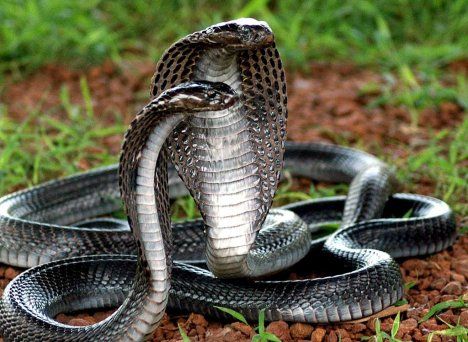
This is one of the few protective charms mentioned in the Pali Canon and specifically allowed by the Buddha for monks to use (another charm, also allowed to the monks, is contained in DN 32). Note that the power of the charm is said to come, not from the words, but from the mind of goodwill with which they are said. It thus differs from charms taught in later forms of Buddhism, where the words themselves are said to contain power.
On one occasion the Blessed One was staying near Sāvatthī in Jeta’s Grove, Anāthapiṇḍika’s monastery. Now, at that time in Sāvatthī a certain monk had died after having been bitten by a snake. Then a large number of monks went to the Blessed One and, on arrival, having bowed down to him, sat to one side. As they were sitting there they said to him, “Lord, just now in Sāvatthī a certain monk died after having been bitten by a snake.”
“Then it’s certain, monks, that that monk didn’t suffuse the four royal snake lineages with a mind of goodwill. For if he had suffused the four royal snake lineages with a mind of goodwill, he would not have died after having been bitten by a snake. Which four? The Virūpakkha royal snake lineage,1 the Erāpatha royal snake lineage, the Chabyāputta royal snake lineage, the Dark Gotamaka royal snake lineage. It’s certain that that monk didn’t suffuse these four royal snake lineages with a mind of goodwill. For if he had suffused these four royal snake lineages with a mind of goodwill, he would not have died after having been bitten by a snake. I allow you, monks, to suffuse these four royal snake lineages with a mind of goodwill for the sake of self-guarding, self-safeguarding, self-protection.”
I have goodwill for the Virūpakkhas,
goodwill for the Erāpathas,
goodwill for the Chabyāputtas,
goodwill for the Dark Gotamakas.
I have goodwill for footless beings,
goodwill for two-footed beings,
goodwill for four-footed beings,
goodwill for many-footed beings.
May footless beings do me no harm.
May two-footed beings do me no harm.
May four-footed beings do me no harm.
May many-footed beings do me no harm.
May all creatures,
all breathing things,
all beings
—each & every one—
meet with good fortune.
May none of them come to any evil.
Limitless is the Buddha,
limitless the Dhamma,
limitless the Saṅgha.
There is a limit to creeping things:
snakes, scorpions, centipedes,
spiders, lizards, & rats.
I have made this safeguard,
I have made this protection.
May the beings depart.
I pay homage
to the Blessed One,
homage
to the seven
rightly self-awakened ones.2
Notes
- The Virūpakkhas are the chiefs of the nagas, associated with the western quarter (see DN 20). The other royal lineages of snakes are nowhere else mentioned in the Pali Canon, and the commentary to this discourse doesn’t identify them. The Dark Gotamakas may be the cobra family.
- The seven most recent Buddhas, including “our” Buddha, are mentioned in DN 14 & DN 32: Vipassin, Sikhin, Vessabhū, Kakusandha, Koṇāgamana, Kassapa, and Gotama. It’s noteworthy that the concept of the seven Buddhas is associated with protective charms. For example, the heart of the charm given in DN 32 is this:
Homage to Vipassin, possessed of vision & splendor. Homage to Sikhin, sympathetic to all beings. Homage to Vessabhū, cleansed, austere. Homage to Kakusandha, crusher of Māra’s host. Homage to Koṇāgamana, the Brahman who lived the life perfected. Homage to Kassapa, entirely released. Homage to Aṇgīrasa [Gotama], splendid son of the Sakyans, who taught this Dhamma: the dispelling of all stress & pain. Those unbound in the world, who have seen things as they are, great ones of gentle speech, thoroughly mature, even they pay homage to Gotama, the benefit of human & heavenly beings, consummate in knowledge & conduct, the great one, thoroughly mature. We revere the Buddha Gotama, consummate in knowledge & conduct.
from the Aṅguttara Nikāya – The Book of Fours – Sutta 67
“The Numerical Discourses of the Buddha”
© Ṭhānissaro Bhikkhu of Metta Forest Monastery
This sutta translation and commentary by Ṭhānissaro Bhikkhu is licensed under a Creative Commons Attribution-NonCommercial 4.0 International Public License